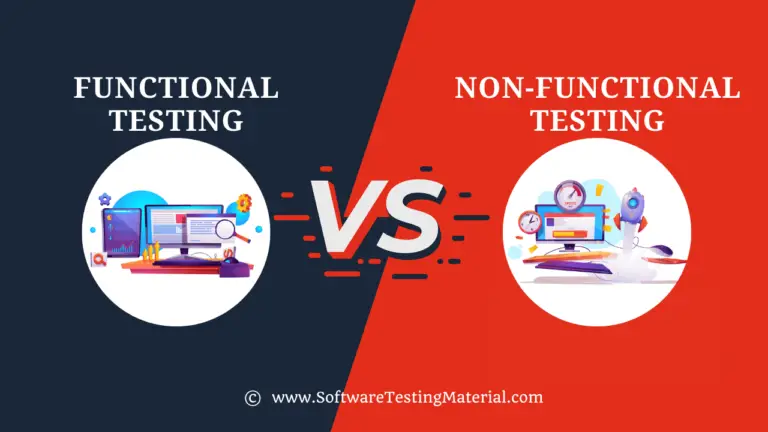Black Box Testing Vs White Box Testing Vs Grey Box Testing: Everything You Should Know
Software testing is an essential part of the development process to ensure that programs work correctly and meet user expectations. There are different ways to test software, and three common methods are black box testing, white box testing, and grey box testing.
Each of these approaches examines software from a unique perspective and serves different purposes during testing. Understanding the differences between these methods can help choose the right type of testing for various situations, ensuring better software quality and performance.
What is Black Box Testing?
Black box testing is a software testing method that focuses on analyzing the functionality of an application without examining its internal code structure, implementation details, or internal workings. The main idea behind black box testing is to test the system purely based on input and output. Testers are not concerned with how the system processes the input, as long as it produces the correct output.
This type of testing is conducted from an end-user perspective. The tester interacts with the software by providing various inputs and verifying whether the output meets the expected results. It helps in finding issues like incorrect functionality, user interface errors, crashes, or gaps in requirements.
Learn more: Black Box Test Design Techniques
Example of Black Box Testing
Imagine testing a calculator application. When the tester inputs two numbers, such as “2” and “3,” and selects the addition operation, the expected output should be “5”. The tester doesn’t need to know the programming logic or the algorithms behind the addition function. They only verify that the calculator produces the correct result for the given inputs.
For instance:
Input: 2 + 3
Expected Output: 5
Actual Output: 5 (Test passes)Input: 10 - 7
Expected Output: 3
Actual Output: 3 (Test passes)Through this method, testers ensure that the application works as intended without requiring in-depth knowledge of its implementation.
What is White Box Testing?
White Box Testing, also known as clear-box testing, open-box testing, or glass-box testing, is a software testing method where the tester has full knowledge of the internal workings of the application. Unlike Black Box Testing, this approach requires understanding the code, logic, and flow of the software to design test cases. Testers use their technical knowledge to examine the application’s internal structure and ensure that it functions as expected.
This type of testing is typically performed by developers or testers who are proficient in coding and have access to the source code. The primary goal is to verify the internal logic, pathways, and error handling of the software. White Box Testing helps find hidden errors that may not be visible in Black Box Testing, such as those caused by improper coding or unoptimized code paths.
Learn more: White Box Testing
Example of White Box Testing
Imagine you are testing a function in a program designed to calculate the greatest of three numbers. The source code for this function is accessible, and it includes conditional statements to determine which number is the greatest. A tester might analyze the code and identify specific inputs to test all possible conditions.
For example:
Code logic:
if (a > b and a > c) then output a
else if (b > a and b > c) then output b
else output cTest cases:
Input: `a = 5, b = 3, c = 2`
Expected Output: `5` (Test passes)
Input: `a = 1, b = 7, c = 4`
Expected Output: `7` (Test passes)
Input: `a = 2, b = 4, c = 8`
Expected Output: `8` (Test passes) By examining the code structure and running these test cases, the tester ensures that all possible logical paths in the function are working correctly. This level of testing guarantees higher accuracy in identifying hidden bugs and ensures robust software quality.
What is Grey Box Testing?
Grey box testing is a software testing method that combines techniques from both white box and black box testing. It involves testing a software application with partial knowledge of its internal workings. Testers in grey box testing have some understanding of the system architecture, code, or algorithms, but they don’t have full access to all the details of the program. This approach bridges the gap between the black box approach, where testers rely only on the external functionality, and the white box approach, where testers have complete code transparency.
Characteristics of Grey Box Testing
- Testers have limited but sufficient knowledge about the internal structure of the software.
- It focuses on both the functionality (black box aspect) and internal processing (white box aspect).
- It involves creating test cases based on information like system architecture diagrams, database schemas, or limited access to parts of the source code.
Benefits of Grey Box Testing
- Helps identify issues that may not be easily detected using black box or white box testing alone.
- Ensures a balanced approach to testing both the system’s internal code structure and external functionality.
- Saves time by reducing the dependency on complete access to code details.
Example of Grey Box Testing
Imagine a web application with a login feature. The tester has access to the database schema but not the full source code. They know that login functionality queries the database to verify user credentials.
- Test Case 1: Enter valid credentials to ensure the user logs in successfully.
- Test Case 2: Try entering invalid credentials to confirm proper error handling mechanisms are in place.
- Test Case 3: Use SQL injection strings as input to check for vulnerabilities in the database query.
- Test Case 4: Modify database entries intentionally to check how the application handles unexpected data formats.
By understanding the database structure, the tester can design test cases to verify both functionality and backend data handling. This ensures the login feature is secure, efficient, and error-proof.
Grey box testing offers a practical and effective way to identify hidden vulnerabilities while maintaining a balance between internal and external testing methods.
Difference between Black Box Testing, White Box Testing and Grey Box Testing
| Aspect | Black Box Testing | White Box Testing | Grey Box Testing |
|---|---|---|---|
| Knowledge Required | Tester does not need knowledge of the internal structure or code of the application. | Tester requires complete knowledge of the internal structure, code, and logic of the application. | Tester has partial knowledge of the internal structure and code, along with an external perspective. |
| Focus Area | Focuses on testing the external behavior and functionality of the application. | Focuses on internal logic, code flow, and structure. | Focuses on both external functionality and certain internal components of the application. |
| Testing Methodology | Based on input and output without analyzing internal workings. | Based on testing internal code, logic paths, and ensuring proper implementation of algorithms. | Combines testing both outputs from inputs and reviewing some internal workings when necessary. |
| Access to Code | No access to the source code or system architecture. | Full access to the source code and system architecture. | Partial access to code or insights about the internal system design. |
| Examples | Functional testing, UI testing. | Unit testing, code reviews, security testing. | Penetration testing, validation of database interactions. |
| Advantages | – Simple and quick to perform. | – Detailed testing ensures code is efficient and secure. | – Combines the strengths of black box and white box testing. |
| Disadvantages | – Does not detect hidden vulnerabilities inside the code. | – Time-consuming and requires highly skilled testers. | – May lack complete access or understanding, reducing testing thoroughness. |
Conclusion
When determining the best approach among black box testing, white box testing, and grey box testing, the choice largely depends on the testing requirements and the goals of the project.
Black box testing is ideal for validating user-facing functionality and ensuring the system meets the end-users’ needs without getting into the implementation details. White box testing excels when a thorough examination of the code is necessary to optimize performance, ensure security, and validate the internal logic of the system. On the other hand, grey box testing strikes a balance, making it a versatile choice for scenarios that benefit from both external output validation and selective internal review, especially in complex systems where limited access to architecture is available.
Each approach has its strengths and challenges, and often a combination of these methods provides the most comprehensive testing coverage.






